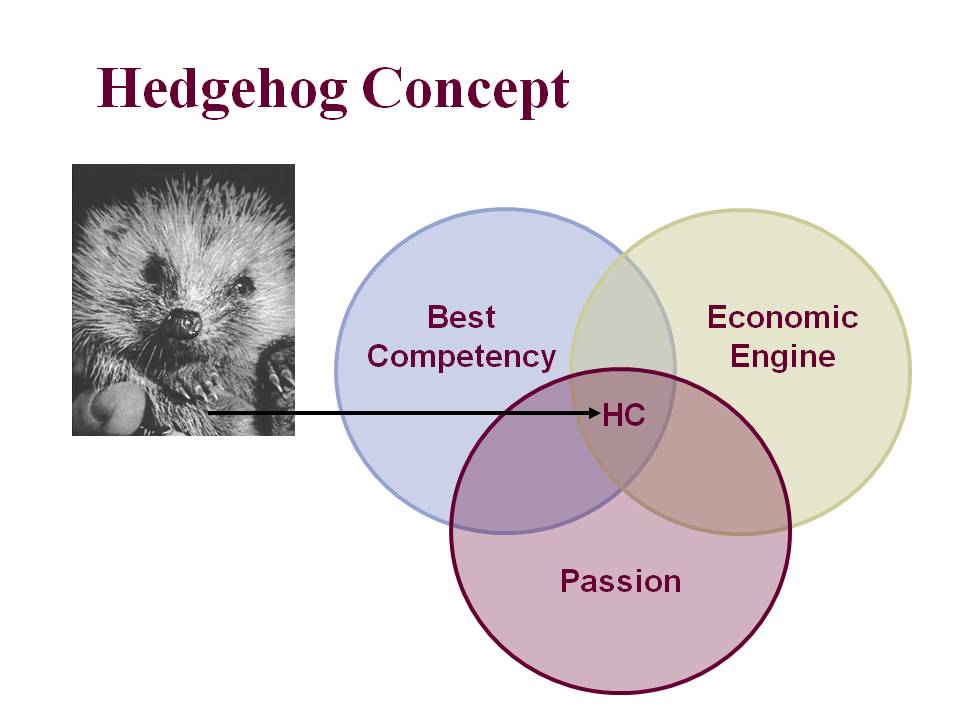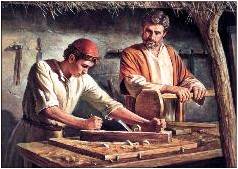|
|
Business as Missions -- blog
|
|
Vision – the Direction for your BAM project 
The recent postings concentrated on focus – understanding how God has positioned you and your team, both with gifts and provisions. We assumed that you have already created the purposes for your project. (The issue of purposes was discussed in the posting dated 10/23/2009.)
Those steps should give you a sense of your mission for the project and “where you are.”
- The purposes God has for your project
- The preparation God has made for you and your team in this work
Vision planning is important so that you will now have a sense of direction about where the project will go.
- Your mission defines the work of the project
- The vision gives you direction for where and how the project will move forward
As an example, consider a BAM project for beginning a school.
- The mission involves the creation and presentation of classes within the community – the work that will be done and services to be offered
- You need a vision now to guide your decisions about how to proceed:
- Types of education and classes
- Age groups
- Learning environment
- Teacher styles
- Christian outreach from the school
- Who in the community will be reached
- Much more…
A typical vision will include three to five categories of elements. As these take shape and are refined, your team’s ability to make good decisions and plan strategically will be improved. Decisions can be tested against the vision – if we do this, will it move us in the direction we are trying to move toward?
The vision planning process has several steps. This process can serve you well in other areas, too, not just in your BAM projects. It is important and beneficial in all organizational work to have vision, including churches.
Next time we will begin with the first step – examining your values.
It is very important that your vision be congruent with your values and those of your team.
Many thanks,
Larry
| Merry Christmas - Next time -- From Focus to Action 
We have talked about a lot of background information related to BAM, business as mission, projects. Most recently we began looking at models that can help us focus our attention and energy.
Now we will begin to look at the process for creating a vision for the BAM and then creating the strategy and action steps necessary to make progress.
We will begin that following Christmas.
From the team at ATC to you, we wish you a very merry Christmas. We look forward to continuing the discussion with you.
As we prepare to enter the New Year, 2010, we are excited to tell you of a missionary group in Colombia that has been participating in this blog that is in planning for a new BAM project in 2010. We will share details with you as they develop.
We will be praying for their success.
Merry Christmas,
Larry
| BAM Focus 
Last time we looked at the hedgehog concept by Jim Collins in his popular book, Good to Great.
This time we consider a variation of the model that has a spiritual perspective.
Searching for our organization’s soul via these can illuminate and answer important questions.
1. What are the purposes of the BAM project? Our blog posting on 10/23/2009 addressed the issue of purpose for a BAM. You might want to look back at those examples:
- Penetrate the community with the Gospel
- Serve the people in the community
- Generate funds for the ministry
- Provide a means and place of Christian discipleship
- Provide meaningful work in a Christian environment
2. How has God uniquely gifted us (the ministry and BAM team) to fulfill that purpose? Develop a deep understanding of the talents and capacities within your team that will be critical to move forward with success.
3. What has been the provision for the project? Examine the things that God has provided that will fuel the BAM with the resources needed to be successful. This includes money, land, facilities, people, time, and more…
It is powerful to have a keen focus on these three areas. Imagine the potential improvement in decision making, in results, and in impact.
The process of defining and understanding these areas will require hard work. It is going to take time. It may require iterations of exploring the questions. Even as your project moves ahead, you will find that focusing on these areas is very useful—steps to refine, to learn, and then to adjust as you go.
Remember, and remind your team, the eternal end result will be worth the labor and time.
Blessings,
Larry
| Business Focus 
It seems all too easy for business to become fragmented these days. There is so much change. New technologies
- New industries
- New tools
- New emerging markets
- On and on...
If we cannot maintain our focus, it is easy to get distracted. We can find ourselves pulled in too many directions to maintain excellence in all areas.
If this tendency is true in business, we must recognize that it is also a risk with a BAM project.
Jim Collins and his team wrote a popular business book – Good to Great.,
In addressing the challenge of focus, he encouraged companies to consider a Hedgehog Concept.

Collins defined the “hedgehog concept.”
1. What you can be the best at—you should:
- Determine what should be attempted by ability, not ego
- Determine what you cannot be best at
- Keep it simple and straightforward
- You may not be doing it now. Your core business may not be the thing you could be the best in the world at
2. What drives your economic engine—strive to:
- Determine your organization’s single economic denominator
- Understand what the key economic drivers are
- Build your system according to that understanding
3. What you are deeply passionate about—seek to discover:
- What ignites your passion and the passion of those that work with you
- The passion can be found in the mechanics of the work or can be focused on what the company stands for
Collins compared the discovery/definition of these three arenas to moving out of a fog into a clear understanding. That is pretty huge when it comes to knowing what to focus on.
When you can determine where these three areas overlap, you have an excellent idea of where you should be focusing.
Next time we will look at a variation of Collins’ model that considers the spiritual dimension important for a BAM.
Blessings,
Larry
| Jesus’ Team and Business 
Some of Christ’s disciples worked in family business. Several of these men were fishermen, including Simon (Peter) and his brother Andrew. James and John, sons of Zebedee, were also in their family fishing business.
Mk 1:16 As Jesus walked beside the Sea of Galilee, he saw Simon and his brother Andrew casting a net into the lake, for they were fishermen. 17 “Come, follow me,” Jesus said, “and I will make you fishers of men.” 18 At once they left their nets and followed him. 19 When he had gone a little farther, he saw James son of Zebedee and his brother John in a boat, preparing their nets. 20 Without delay he called them, and they left their father Zebedee in the boat with the hired men and followed him.
Another of his team members had a different angle on business. This man was a government employee, responsible for collecting taxes. To be sure he would have known a great deal about local businesses.
Lk 5:27 After this, Jesus went out and saw a tax collector by the name of Levi sitting at his tax booth. “Follow me,” Jesus said to him, 28 and Levi got up, left everything and followed him. 29 Then Levi held a great banquet for Jesus at his house, and a large crowd of tax collectors and others were eating with them.
These were ordinary men (business guys like you and me) who Jesus used for extraordinary purposes. That is exciting. It is very special for us, people of business, to see that we have backgrounds that God has always found extremely valuable for his work and mission.
This continued after Christ had ascended into heaven, also. Paul at times attended to his profession of tent making along with other believers, fitting into the society he was trying to reach with the Gospel. This special group includes women, too. Lydia was a special business woman who lived out her faith by sharing the good news.
Ac 16:13 On the Sabbath we went outside the city gate to the river, where we expected to find a place of prayer. We sat down and began to speak to the women who had gathered there. 14 One of those listening was a woman named Lydia, a dealer in purple cloth from the city of Thyatira, who was a worshiper of God. The Lord opened her heart to respond to Paul’s message. 15 When she and the members of her household were baptized, she invited us to her home. “If you consider me a believer in the Lord,” she said, “come and stay at my house.” And she persuaded us.
This is truly exciting, to see the Lord’s use of business people and to be able to begin to visualize how God has prepared us as business people to be valuable parts of his great commission.
Blessings and thank you for your continuing interest in this topic,
Larry
| Jesus and Business 
It is really interesting to reflect on the team that Jesus created – his twelve disciples. These were men from a variety of work backgrounds.
Jesus himself had experience with manual work and small business. The family business owned by his father was carpentry. Throughout his ministry, Christ included examples and lessons with a backdrop of business. This allowed his teaching to connect with business people. The story of the talents is one example.
Mt 25:14 “Again, it will be like a man going on a journey, who called his servants and entrusted his property to them. 15 To one he gave five talents of money, to another two talents, and to another one talent, each according to his ability. Then he went on his journey. 16 The man who had received the five talents went at once and put his money to work and gained five more. 17 So also, the one with the two talents gained two more…
He used other types of business settings to teach powerful lessons. These included management of vineyards, planting and raising crops, and construction. The world of work and the marketplace were powerful backgrounds as Jesus reached out to people in their day-to-day settings and roles.
This is true today. We can connect with people in a powerful way through businesses where we involve them, whether as employees, customers, vendors or in other ways. Our presence in the business community positions us to touch a lot of people for Christ.
Blessings,
Larry
| | |
|
|
|
|
|